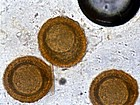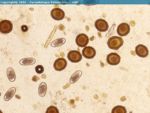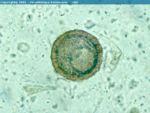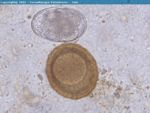Difference between revisions of "Parascaris equorum"
| (27 intermediate revisions by 3 users not shown) | |||
| Line 1: | Line 1: | ||
| − | |||
| − | |||
| − | |||
| − | |||
| − | |||
| − | |||
| − | |||
| − | |||
| − | |||
| − | |||
| − | |||
| − | |||
| − | |||
| − | |||
| − | |||
| − | |||
[[Image:Parascaris equorum.jpg|thumb|right|150px|''Parascaris equorum'' - Joaquim Castellà Veterinary Parasitology Universitat Autònoma de Barcelona]] | [[Image:Parascaris equorum.jpg|thumb|right|150px|''Parascaris equorum'' - Joaquim Castellà Veterinary Parasitology Universitat Autònoma de Barcelona]] | ||
[[Image:Parascaris equorum2.jpg|thumb|right|150px|''Parascaris equorum'' - Joaquim Castellà Veterinary Parasitology Universitat Autònoma de Barcelona]] | [[Image:Parascaris equorum2.jpg|thumb|right|150px|''Parascaris equorum'' - Joaquim Castellà Veterinary Parasitology Universitat Autònoma de Barcelona]] | ||
[[Image:Parascaris equorum3.jpg|thumb|right|150px|''Parascaris equorum'' - Joaquim Castellà Veterinary Parasitology Universitat Autònoma de Barcelona]] | [[Image:Parascaris equorum3.jpg|thumb|right|150px|''Parascaris equorum'' - Joaquim Castellà Veterinary Parasitology Universitat Autònoma de Barcelona]] | ||
[[Image:Parascaris equorum4.jpg|thumb|right|150px|''Parascaris equorum'' - Joaquim Castellà Veterinary Parasitology Universitat Autònoma de Barcelona]] | [[Image:Parascaris equorum4.jpg|thumb|right|150px|''Parascaris equorum'' - Joaquim Castellà Veterinary Parasitology Universitat Autònoma de Barcelona]] | ||
| − | |||
| − | Predilection site | + | {| cellpadding="10" cellspacing="0" border="1" |
| + | | Predilection site | ||
| + | | Small intestine | ||
| + | |- | ||
| + | | Superfamily | ||
| + | | Ascaridoidea | ||
| + | |- | ||
| + | |} | ||
| + | ====Introduction==== | ||
| + | ''P. equorum'' is a nematode that primarily affects younger horses, usually under two years of age, as their immune response is not as developed as older horses. | ||
| − | == | + | ==== Morphology ==== |
| − | + | *Stout worms, up to 50cm long. | |
| + | *Three large lips around mouth. | ||
| − | == | + | ==== Life-Cycle ==== |
| − | + | The adults live unattached in the small intestine. In heavy infections, they may form large balls, which can cause intestinal obstruction. Under optimal conditions L2 can develop in 14 days. The host ingests the embryonated egg. L2 larvae then pass through the intestinal wall, and transfrom into L3. They then migrate to the liver via the hepatic portal vein, where they stay for around a week. They then enter the vena cava and travel to the pulmonary alveoli, where they transform to L4. | |
| − | + | They then travel up bronchi to the trachea and are coughed up and swallowed. They then return to the stomach and small intestine, where they mature into adults. | |
| − | |||
| − | The | + | The prepatent period of ''P. equorum'' is 10-16 weeks. |
| − | + | ==== Pathogenicity ==== | |
| + | *''Larvae'' - eosinophilic tracts and haemorrhages in liver and lungs. Clinically, latter may lead to cough and nasal discharge. | ||
| + | *''Adult worms'' - may cause unthriftiness, weight loss; impaction and intestinal perforation rarely. | ||
| + | |||
| + | ==== Epidemiology ==== | ||
| + | '''High Fecundity of Female ''Parascaris''''': | ||
| + | *Infected foal may pass millions of eggs per day. | ||
| + | |||
| + | '''Resistance of Eggs in Environment''': | ||
| + | *Thick, pitted shell ensures prolonged survival (>1year). | ||
| + | *Sticky outer shell aids passive spread. | ||
| − | + | '''Susceptible Animals''': | |
| + | *Foals (<4months) - transmission from one year's foals to the next, infection normally occurring during the first month of life. | ||
| + | *Adult horses - few worms only (carriers?). | ||
| − | + | ==== Control ==== | |
| − | + | *Regular anthelmintic treatment. | |
| − | + | *Remove faeces from paddocks - collect every 2weeks (takes 2weeks to reach L2 stage). | |
| − | |||
| − | |||
| − | |||
| − | + | *Causes transient [[Nasal Cavity Inflammatory - Pathology#Infectious causes of rhinitis|nasal discharge]] when migrating through [[Lungs Inflammatory - Pathology#Infectious causes of pneumonia|lungs]] | |
| + | **Foals and weanlings | ||
[[Category:Ascaridoidea]][[Category:Horse_Nematodes]] | [[Category:Ascaridoidea]][[Category:Horse_Nematodes]] | ||
| − | [[Category: | + | [[Category:To_Do_-_Max]] |
| − | |||
Revision as of 20:50, 14 July 2010
| Predilection site | Small intestine |
| Superfamily | Ascaridoidea |
Introduction
P. equorum is a nematode that primarily affects younger horses, usually under two years of age, as their immune response is not as developed as older horses.
Morphology
- Stout worms, up to 50cm long.
- Three large lips around mouth.
Life-Cycle
The adults live unattached in the small intestine. In heavy infections, they may form large balls, which can cause intestinal obstruction. Under optimal conditions L2 can develop in 14 days. The host ingests the embryonated egg. L2 larvae then pass through the intestinal wall, and transfrom into L3. They then migrate to the liver via the hepatic portal vein, where they stay for around a week. They then enter the vena cava and travel to the pulmonary alveoli, where they transform to L4.
They then travel up bronchi to the trachea and are coughed up and swallowed. They then return to the stomach and small intestine, where they mature into adults.
The prepatent period of P. equorum is 10-16 weeks.
Pathogenicity
- Larvae - eosinophilic tracts and haemorrhages in liver and lungs. Clinically, latter may lead to cough and nasal discharge.
- Adult worms - may cause unthriftiness, weight loss; impaction and intestinal perforation rarely.
Epidemiology
High Fecundity of Female Parascaris:
- Infected foal may pass millions of eggs per day.
Resistance of Eggs in Environment:
- Thick, pitted shell ensures prolonged survival (>1year).
- Sticky outer shell aids passive spread.
Susceptible Animals:
- Foals (<4months) - transmission from one year's foals to the next, infection normally occurring during the first month of life.
- Adult horses - few worms only (carriers?).
Control
- Regular anthelmintic treatment.
- Remove faeces from paddocks - collect every 2weeks (takes 2weeks to reach L2 stage).
- Causes transient nasal discharge when migrating through lungs
- Foals and weanlings



